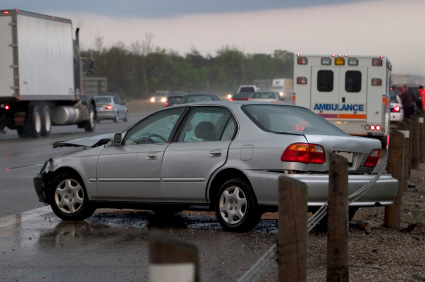Report: U.S. traffic deaths surged 5% in 2012
Emmet Pierce
As the U.S. economy continues to improve, Americans have something new to worry about: a spike in traffic deaths.
The National Safety Council recently reported that an estimated 36,200 vehicle deaths occurred in 2012. That’s 5 percent more than in 2011 and the first increase since 2005.
In addition to the human cost, car accidents involving injuries and deaths take a heavy financial toll on society, the council reports. The cost in 2012 for such things as lost wages, lost workplace productivity, medical expenses, property damage and police to insurers was $276.6 billion. That’s a 5 percent rise over 2011.
While the National Safety Council isn’t sure why the surge in deaths occurred, the main suspect is the healing economy.
 “It is common to see an uptick in the number of motor vehicle fatalities following a recession,” says Kenneth Kolosh, the council’s manager of statistics.
“It is common to see an uptick in the number of motor vehicle fatalities following a recession,” says Kenneth Kolosh, the council’s manager of statistics.
Kolosh says the upward trend in traffic deaths probably is going to continue into 2013, as the economy keeps recovering.
Russ Rader, a spokesman for the nonprofit Insurance Institute for Highway Safety, says a jump in traffic deaths is to be expected when unemployed people begin returning to work and resuming their workday commutes. When the economy gets stronger, the amount of recreational driving also rises, he says.
“If you are worried about your pocketbook, you probably are less likely to take optional trips,” Rader says. “There are fewer tailgate parties, less driving across the state to see friends or family.”
Teen drivers and electronic devices
Janet Froetscher, president and CEO of the National Safety Council, has said that more effort should be made to reduce deaths involving teen drivers and distracted drivers. According to the National Highway Traffic Safety Administration (NHTSA), traffic accidents are the leading cause of death among U.S. teens. When measured by the number of miles driven, teens are involved in three times as many fatal crashes as all other drivers.
In 2011, 3,331 people were killed in crashes involving distracted drivers, compared with 3,267 in 2010, according to NHTSA.
Coping with technology
Pete Moraga, a spokesman for the nonprofit Insurance Information Network of California, says cutting down on distracted driving could become more difficult as automakers add electronic gizmos to vehicles.
“As we get more and more technology, you probably are going to see more accidents,” Moraga says. “Driving requires your full attention.”
To combat this, the NHTSA has urged automakers to incorporate technology into their new vehicles to disable built-in cellphones, texting, emailing and other gadgets, unless cars are parked. GPS systems would be operable when cars are in motion, but drivers would need to stop their vehicles to type in new destinations.
According to Michael Barry, a spokesman for the nonprofit Insurance Information Institute, the National Safety Council report on traffic deaths will have little or no effect on auto insurance rates.
“This is an unfortunate trend, but I don’t think it (will have) a substantial impact on auto insurance premiums,” he says. “Auto insurers are looking at the frequency and severity of claims. While a fatal accident is certainly a severe one, it may not result in the costliest claim payouts.”
Tips for staying safe
Here are five tips for reducing your risks while driving:
- Don’t start your car until every passenger has buckled his or her seat belt.
- Always observe the speed limit. Driving too fast or too slow boosts the chance of an accident.
- Never drink and drive. Alcohol use is involved in more than 40 percent of all deadly car accidents. Intoxicated drivers often underestimate the effects of alcohol. Even a single drink can make a difference.
- Don’t use cellphones – not even hands-free systems – or any other mobile electronic devices while driving your car.
- Watch out for the other guy. If a car is weaving or responding slowly to traffic signals, the driver may be under the influence of alcohol or drugs.
